Figures & data
Figure 1. Association between M-Tre (a) and Δ Tre (b) with plasma concentrations of I-FABP in response to 2 h of strenuous running exercise in temperate (20–30°C) and hot (~35°C) ambient conditions.
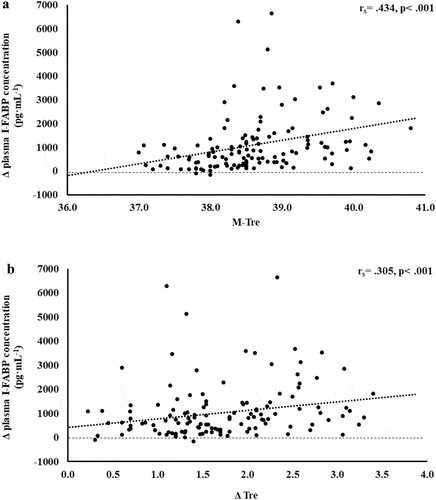
Figure 2. Association between M-Tre (a) and Δ Tre (b) with plasma concentrations of sCD14 in response to 2 h of strenuous running exercise in temperate (20–30°C) and hot (~35°C) ambient conditions.
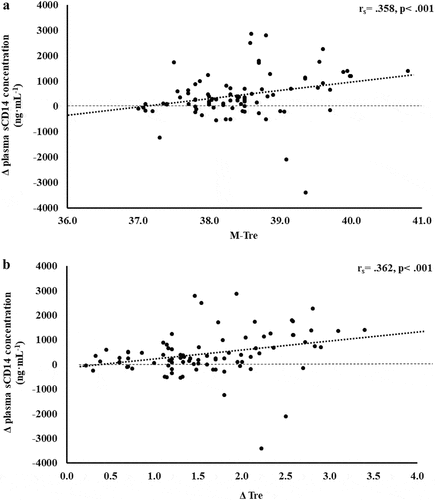
Figure 3. Association between M-Tre (a) and Δ Tre (b) with plasma concentrations of IL-6 in response to 2 h of strenuous running exercise in temperate (20–30°C) and hot (~35°C) ambient conditions.
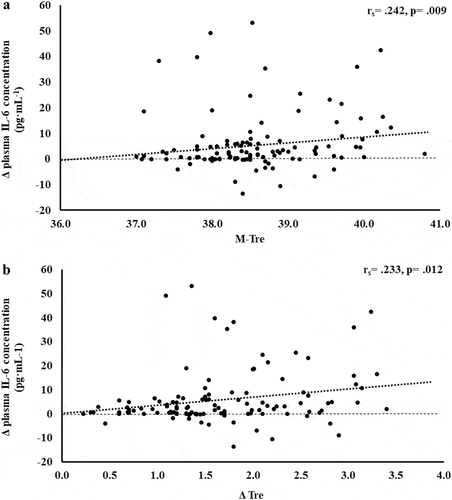
Figure 4. Association between M-Tre (a) and Δ Tre (b) with plasma concentrations of IL-8 in response to 2 h of strenuous running exercise in temperate (20–30°C) and hot (~35°C) ambient conditions.
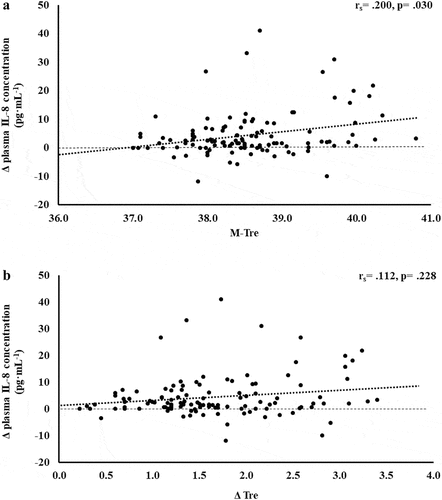
Figure 5. Association between M-Tre (a) and Δ Tre (b) with plasma concentrations of IL-10 in response to 2 h of strenuous running exercise in temperate (20–30°C) and hot (~35°C) ambient conditions.

Figure 6. Association between M-Tre (a) and Δ Tre (b) with plasma concentrations of IL-1ra in response to 2 h of strenuous running exercise in temperate (20–30°C) and hot (~35°C) ambient conditions.

Figure 7. Association between M-Tre (a) and Δ Tre (b) with plasma concentrations of SIR-Profile in response to 2 h of strenuous running exercise in temperate (20–30°C) and hot (~35°C) ambient conditions.
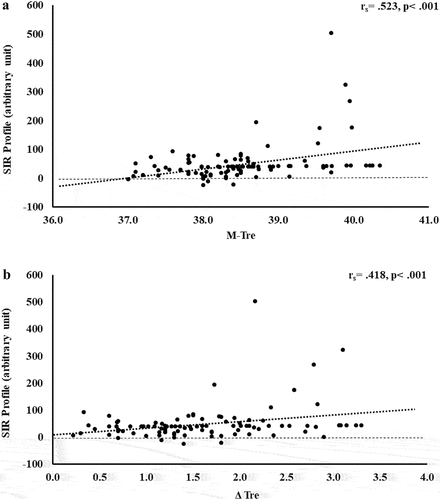
Figure 8. Association between M-Tre (a) and Δ Tre (b) with total exercise-associated gastrointestinal symptoms in response to 2 h of strenuous running exercise in temperate (20–30°C) and hot (~35°C) ambient conditions.

Table 1. Association between M-Tre and Δ Tre with plasma concentrations of EIGS epithelial integrity and systemic inflammatory biomarkers in response to 2 h of strenuous running exercise in temperate (20–30°C) and hot (~35°C) ambient conditions.
Table 2. Association between M-Tre and Δ Tre with exercise-associated gastrointestinal symptoms (Ex-GIS) in response to 2 h of strenuous running exercise in temperate (20–30°C) and hot (~35°C) ambient conditions.
Table 3. Magnitude of prediction of change in plasma concentrations of EIGS epithelial integrity, systemic inflammatory biomarkers, and exercise-associated gastrointestinal symptoms (Ex-GIS) in response to 2 h of strenuous running exercise in temperature (20–30°C) and hot (~35°C) ambient conditions.
